Winter in Connecticut is absolutely beautiful, especially when the snow falls. And many birds enjoy that weather even more than we do. That’s great news for bird lovers since they can continue watching their feathered friends even on the coldest days. Here are 11 birds that spend their winters in Connecticut. Keep your eyes peeled for your favorite!
American Goldfinch
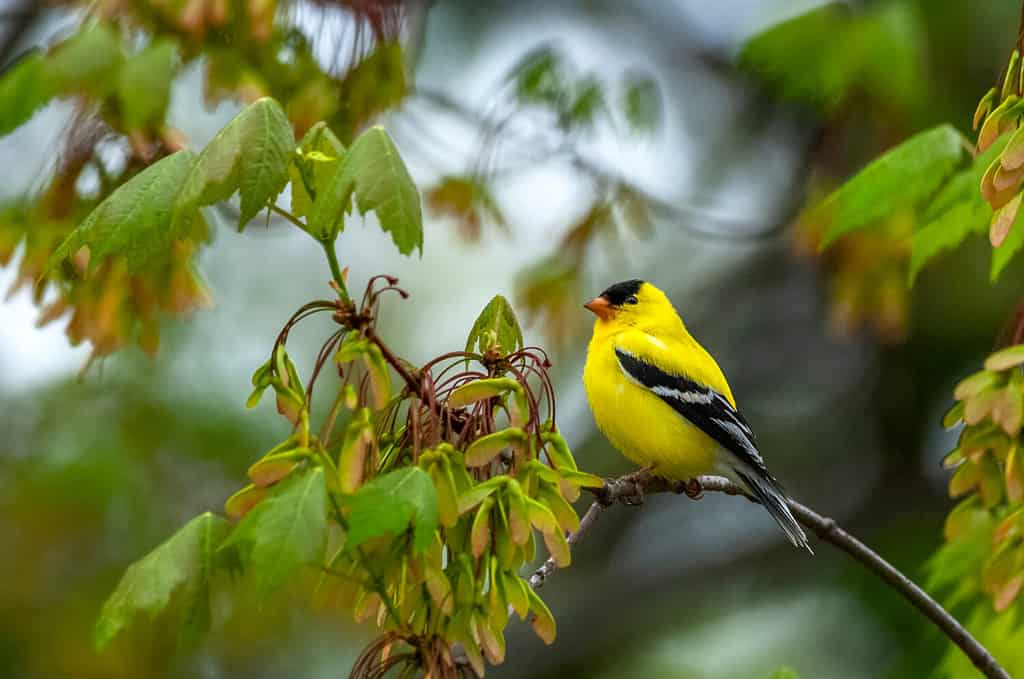
The male American Goldfinch has distinctive yellow feathers throughout most of the year.
©Alan B. Schroeder/Shutterstock.com
The American Goldfinch (Spinus tristis) often sticks around Connecticut through the winter, as long as food is readily available. However, they may become slightly more difficult to spot since both males and females have brown feathers in the winter.
American Robin
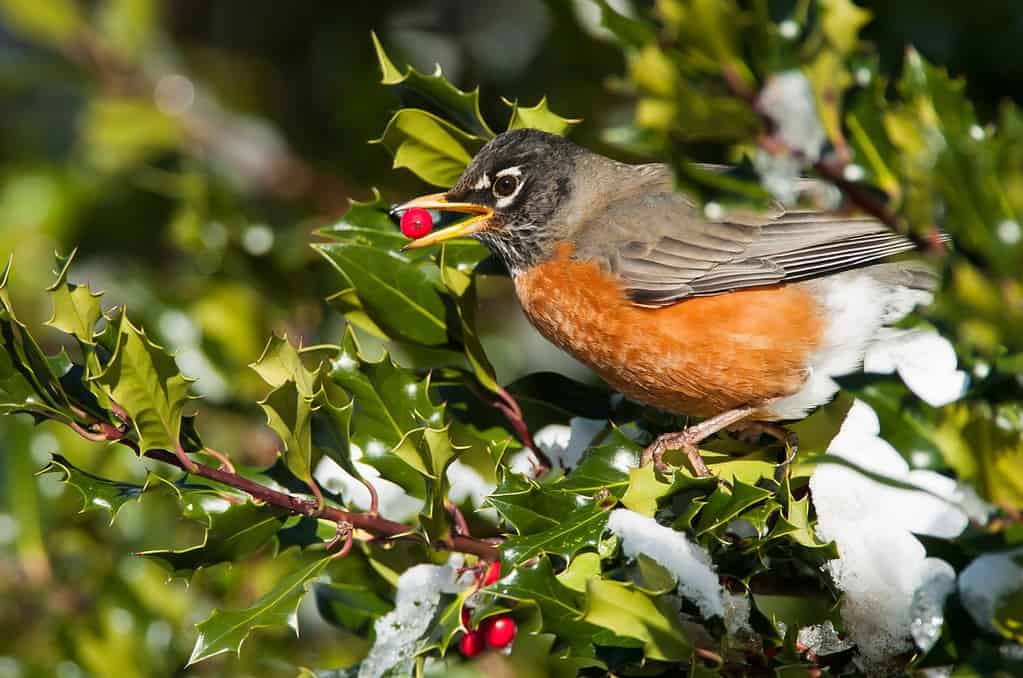
American Robins love being near populated areas, so they are one of the most recognizable birds in North America.
©Jukka Jantunen/Shutterstock.com
One of the most familiar birds in North America is the American Robin (Turdus migratorius). The primary reason for this fact is that the stunning birds love hanging out close to people. You can spot them throughout the countryside, towns, and even in cities.
Black-capped Chickadee
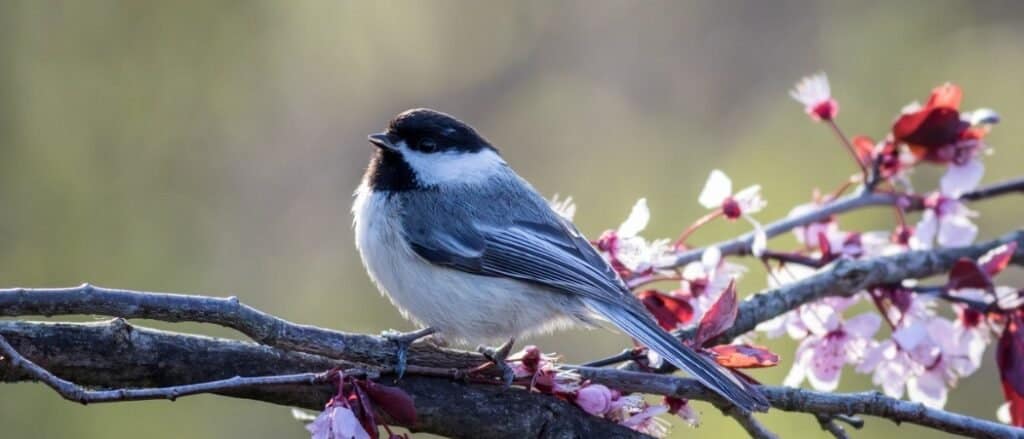
Tiny Black-capped Chickadees tend to stick around one place.
©Rabbitti/Shutterstock.com
Black-capped Chickadees (Poecile atricapillus) are easy to spot throughout Connecticut in the winter. They don’t migrate often. Intrepid bird watchers can typically find these tiny birds around the edges of thickets and forests.
Blue Jay

The remarkable blue feathers on Blue Jays is how these beautiful birds got their names.
©David Menke, Public domain, via Wikimedia Commons – License
Blue Jays (Cyanocitta cristata) often take center stage in the bird world, thanks to their striking blue feathers. These highly intelligent birds usually hang out around gardens, mixed woods, and in towns. Blue Jays will take advantage of your bird feeders. They also mimic a Red-tail Hawk when trying to scare other birds away from something they want.
Carolina Wren
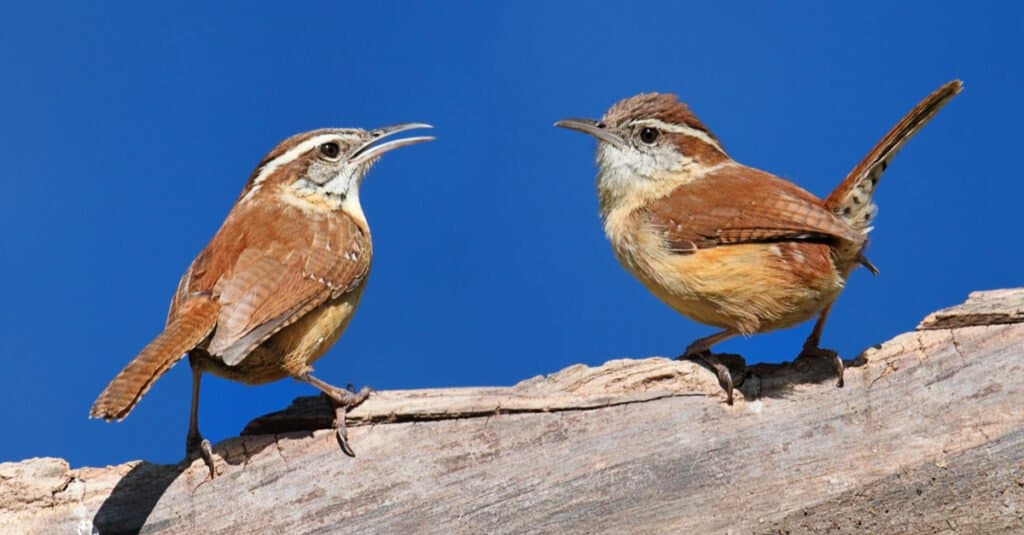
Carolina Wrens are well known for their beautiful singing. You will likely hear them before you see them.
©Steve Byland/Shutterstock.com
You may have heard the lovely song of the Carolina Wren (Thryothorus ludovicianus) throughout the year. These lovely birds also love spending time in Connecticut during the winter. They tend to spend time in thickets, mixed woods, and backyards.
Dark-eyed Junco
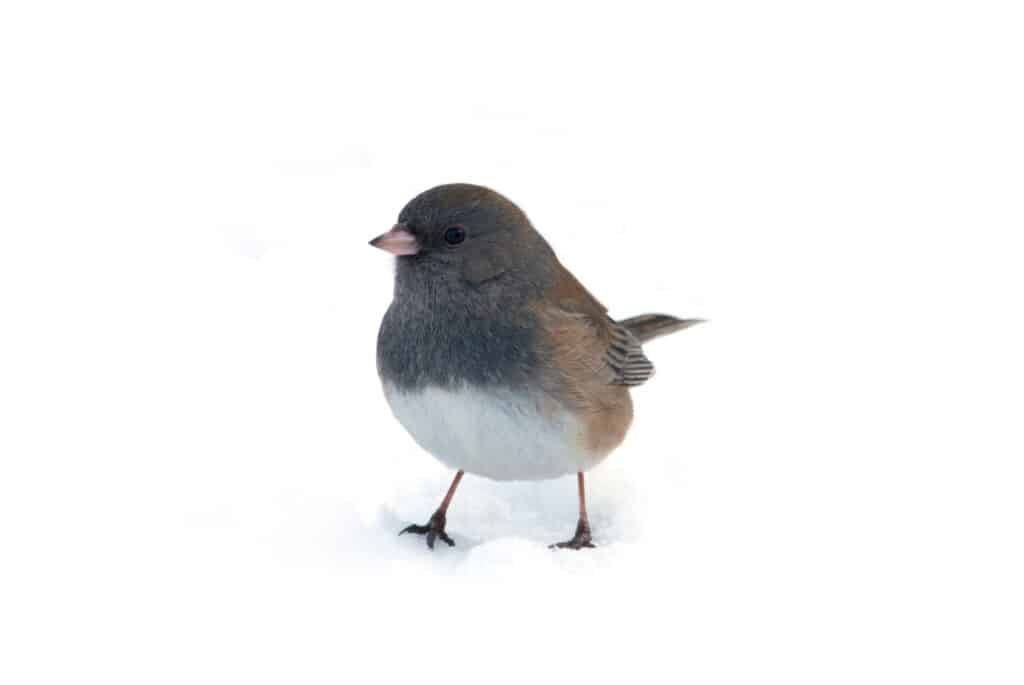
Dark-eyed juncos love the winter and enjoy frolicking in the snow.
©Gerald A. DeBoer/Shutterstock.com
Juncos, including Dark-eyed Juncos (Junco hyemalis), love the winter. They spend the colder weather flocking through yards, bushes, and open woodland areas. These fascinating birds hop along the ground during foraging rounds.
Downy Woodpecker

The adorable Downy Woodpeckers are smaller than many of their relatives. They can even forage on grass and weed stalks.
©J Edwards Photography/Shutterstock.com
Downy Woodpeckers (Dryobates pubescens) are the smallest members of the woodpecker family in North America. Their petite size allows them to forage in areas their cousins can’t. You can spot them in any habitat that has deciduous trees. These woodpeckers also enjoy spending time with other birds during the winter. You may often see them interspersed with species like chickadees.
European Starling
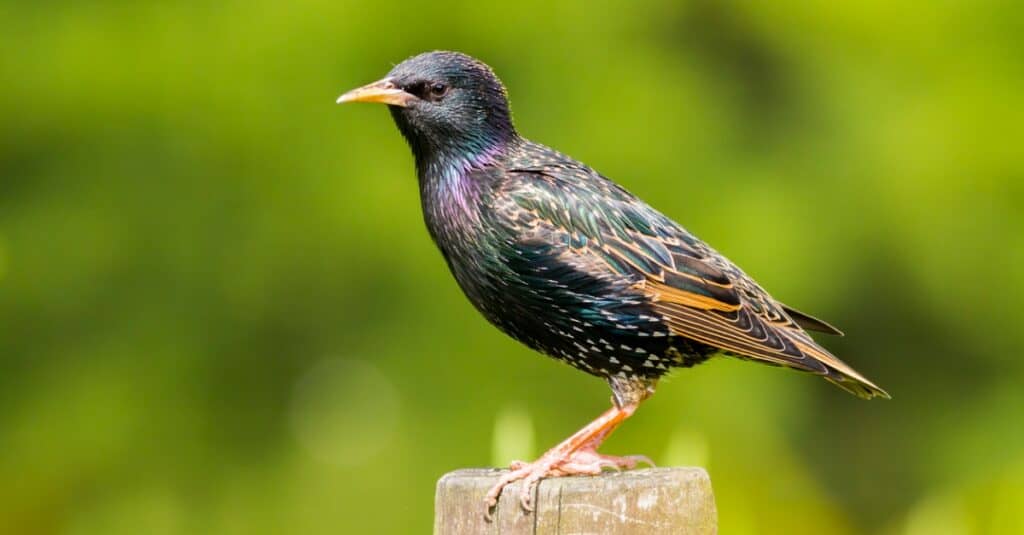
Not everyone is a fan of the European Starling since they tend to take over any space occupied by other birds.
©iStock.com/chris2766
Many people are not fond of the ever-present European Starling (Sturnus vulgaris). They perfectly imitate the calls and songs of other species. These intelligent birds also nest in the same location as some woodpecker and bluebird species, which often causes problems. Spotting European Starlings isn’t difficult since they spend much of their time in populated areas.
Hairy Woodpecker
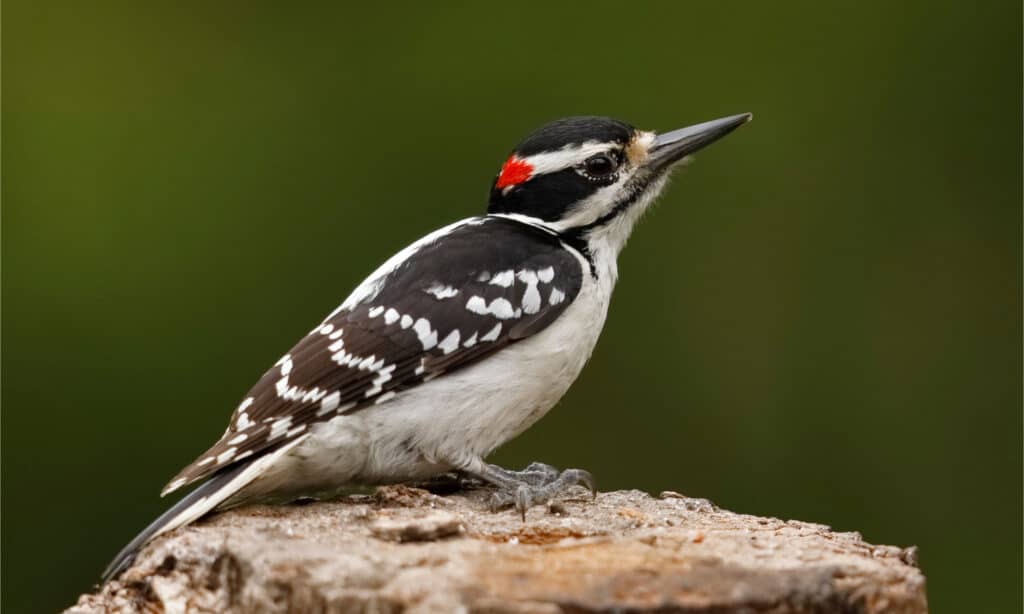
Hairy woodpeckers mostly differ from Downy Woodpeckers in their bill shape and overall body size.
©Brian Lasenby/Shutterstock.com
The Hairy Woodpecker (Dryobates villosus) is a little larger than the Downy Woodpecker, but the two share a great deal in common, including their coloring. However, Hairy Woodpeckers need larger trees to nest in, often competing against Starlings for the space.
House Sparrow
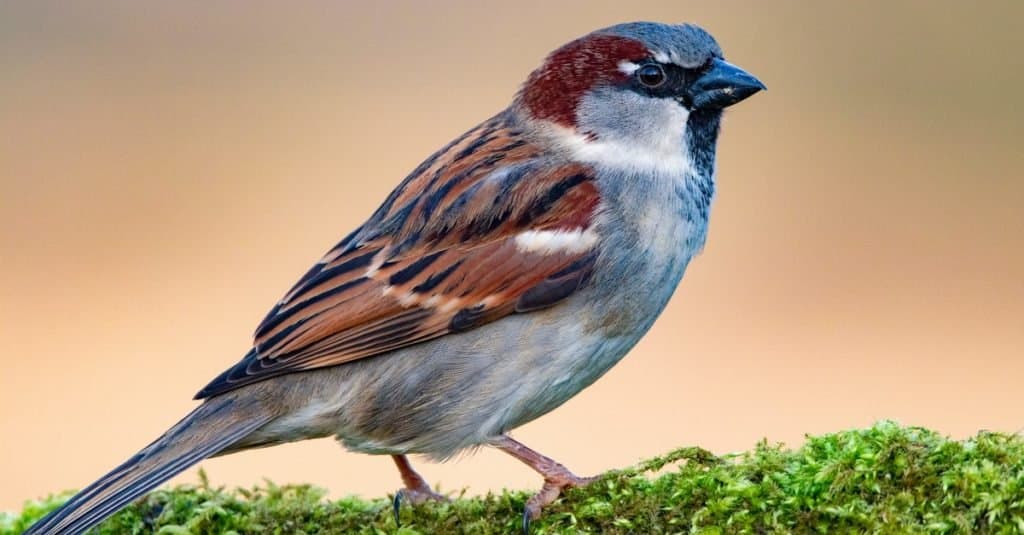
A House Sparrow spends an inordinate amount of time around homes, businesses, yards, and parks.
©Craig Howman/Shutterstock.com
True to its name, the House Sparrow (Passer domesticus) sticks close to people. It also sings delightful songs, making it easily identifiable. These adaptable birds will happily make their home anywhere near manmade buildings. House sparrows hop along the ground during their foraging expeditions.
Mourning Dove
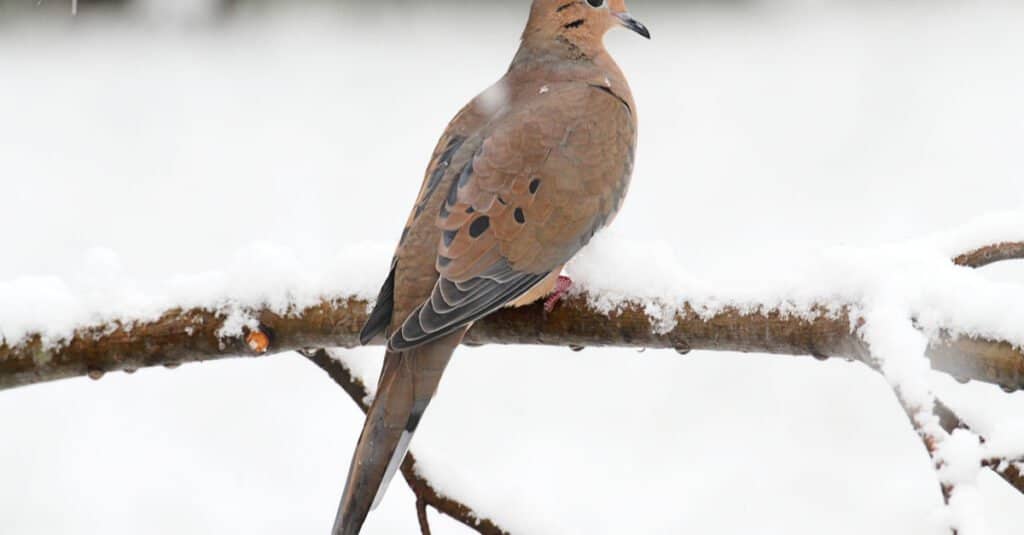
The Mourning Dove population has most likely grown in recent years, unlike some other bird species.
©iStock.com/SteveByland
Mourning Doves (Zenaida macroura) are native to North America and have increased in population over recent years. That is because they don’t like thick or unbroken wooded areas. Mourning doves prefer more open areas and are often spotted near towns and cities. You have likely heard their unique cooing, which is also how they got their name.
The photo featured at the top of this post is © Fiona M. Donnelly/Shutterstock.com
Thank you for reading! Have some feedback for us? Contact the AZ Animals editorial team.







